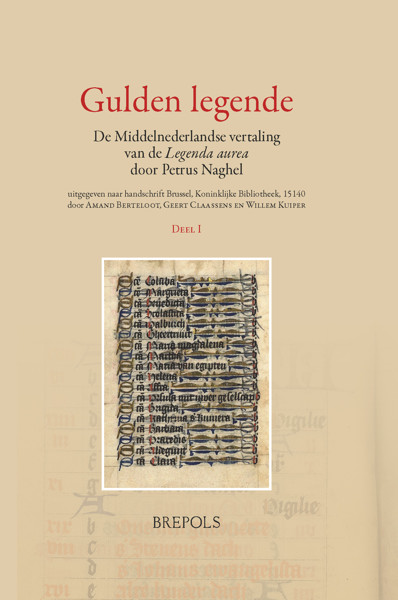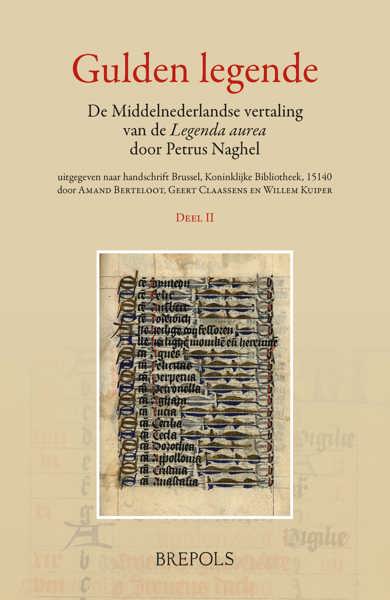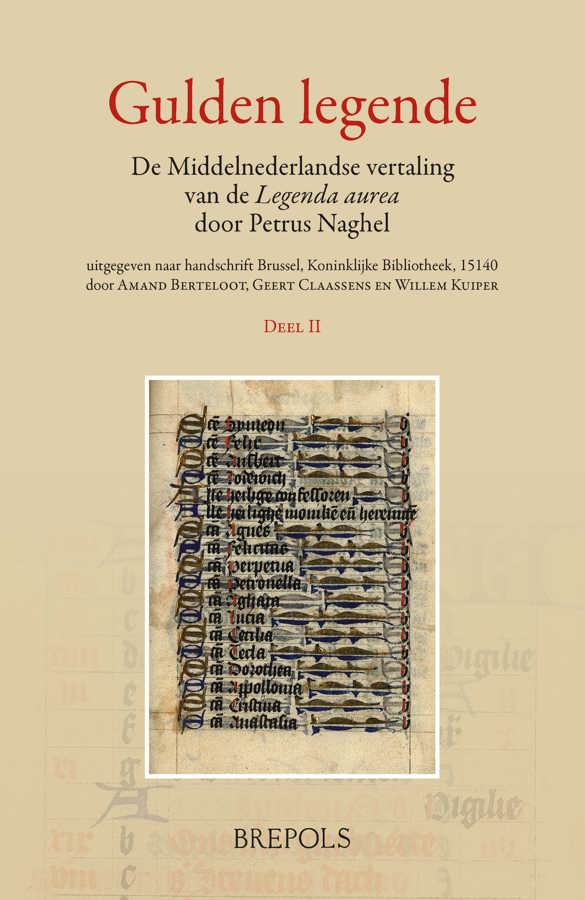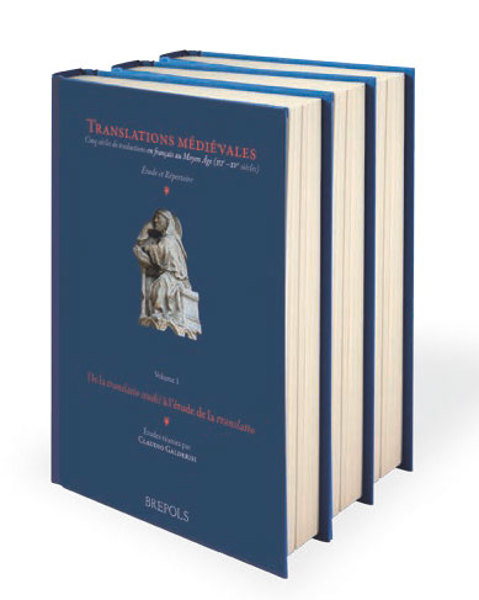
Petrus Naghel
Gulden Legende
De Middelnederlandse vertaling van de 'Legenda aurea' door Petrus Naghel, uitgegeven naar handschrift Brussel, Koninklijke Bibliotheek, 15140. Deel II
A. Berteloot, G. Claassens, W. Kuiper (eds)
- Pages: 621 p.
- Size:156 x 234 mm
- Language(s):Dutch, Middle Dutch
- Publication Year:2012
- € 145,00 EXCL. VAT RETAIL PRICE
- ISBN: 978-2-503-54272-0
- Hardback
- Available
“(…) result is astonishing. The editors seem to have worked as scrupulously as Petrus Naghel (…) They offer a full description of the manuscript, provide a detailed history of this copy, and convincingly argue for Petrus Naghel’s role as the translator.” (H. GeybelsJ, in Ephemerides Theologicae Lovanienses 93/4, 2017, p. 759)
« Outre l’établissement critique du texte, c’est surtout l’étude soignée de ce dernier, et de ses témoins, sur le plan linguistique – particulièrement l’analyse de leur morphologie – qui constitue à nos yeux la principale plus-value de ces volumes. (Fr. De Vriendt, dans Analecta Bollandiana, 136 / I, 2018, p. 198)
The importance of the Legenda aurea for the Late Middle Ages can hardly be overestimated, as witness the impressive manuscript tradition of the original Latin text as well the different vernacular versions. This huge hagiographic collection, organised per circulum anni, can be considered as a compendium of the medieval religious worldview: it offers insights into the (deuterocanonic) tradition of the New Testament, the lives and deaths of the most important saints, the history of the church of Rome, and it can be read as a catechism in narrative form. But the Legenda aurea is also a treasure-trove of stories, motifs and themes splendidly reflecting medieval mentality in its entirety. The influence of the Legenda aurea on literature and iconography is so far-reaching, that the book is an indispensable aid for the ‘reading’ of countless medieval texts, paintings and sculptures.
The text was translated several times into Middle Dutch and of the first southern Dutch translation (ca. 1357), made by Petrus Naghel († 1395) in the Charterhouse of Herne, a modern edition is now available. This edition of the Gulden legende – the second volume of a set of two – contains the legends of Pope Urban to the Feast of Church Dedication, and carries a concise introduction. The first volume of the set will appear in print in 2013; it contains the remaining legends and an expansive introduction comprising an introduction of text and translator, a description of the manuscript used for the edition, a statement of editorial policy and indices of names.
Het belang van de Legenda aurea in de late Middeleeuwen kan moeilijk overschat worden, getuige de indrukwekkende handschriftelijke overlevering van zowel de oorspronkelijke Latijnse tekst als van de verschillende volkstalige versies. Deze omvangrijke hagiografische verzameling, georganiseerd per circulum anni, kan beschouwd worden als een compendium van het middeleeuwse religieuze wereldbeeld: het biedt inzicht in de (deuterocanonieke) traditie van het Nieuwe Testament, het leven en sterven van de belangrijkste heiligen, de geschiedenis van de Kerk van Rome en het kan gelezen worden als een catechismus in narratieve vorm. Maar de Legenda aurea is ook een schatkamer van verhalen, motieven en themata waarin de gehele middeleeuwse mentaliteit een schitterende weerspiegeling vindt. De invloed van de Legenda aurea op de literatuur en de beeldende kunsten is zo verregaand dat het boek een onmisbaar hulpmiddel is voor het ‘lezen’ van talloze middeleeuwse teksten, schilderijen en sculpturen.
De tekst werd meermaals in het Middelnederlands vertaald en van de eerste, Zuidnederlandse vertaling, rond 1357 vervaardigd door de Hernse kartuizer Petrus Naghel (†1395) is nu een kritische uitgave beschikbaar. Deze editie van de Gulden legende – het tweede deel van wat een tweedelige uitgave wordt – bevat de legenden van paus Urbanus tot en met Kerkwijding, en wordt voorafgegaan door een beknopte inleiding. Het eerste deel zal volgens plan in 2013 verschijnen en de resterende legenden bevatten, maar ook een uitvoerige inleiding met, onder andere, een introductie van tekst en vertaler, een beschrijving van het gebruikte basishandschrift, editieprincipes en indices op namen.


